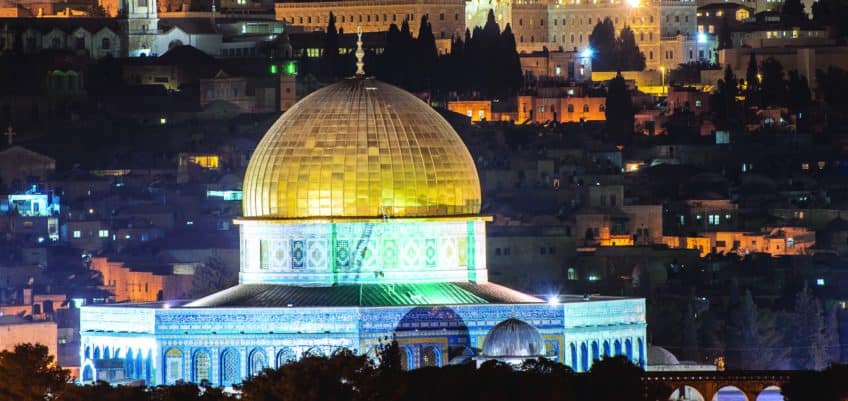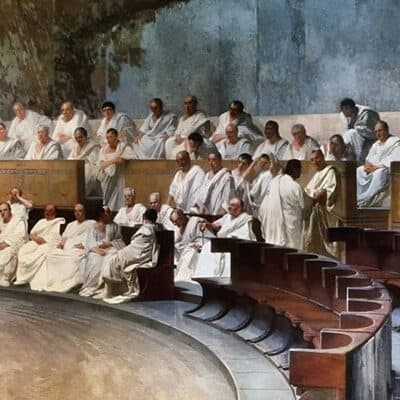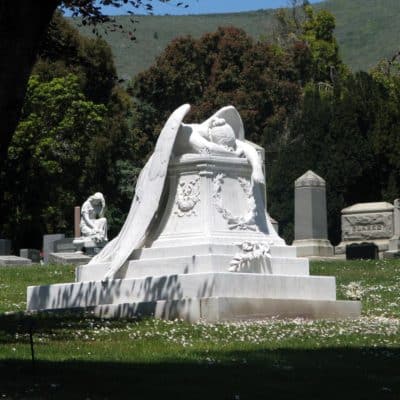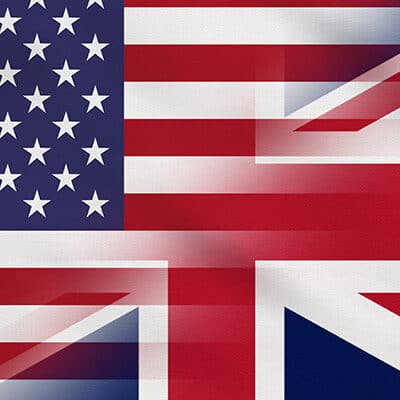Introduction: As we go to print with this issue of 21st Century WATCH, a national speech is being given by the president to outline a strategy to deal with the threat of ISIS. Despite constant intelligence warnings dating back at least a year and more, the administration declined to raise the issue publicly, and declined to take any action whatever until ISIS had gobbled up the cities and towns of northwestern Iraq, decapitating about twenty, murdering thousands and sending tens of thousands fleeing for their lives. Finally, with the Mosul Dam under ISIS control, and with the prospect of genocide for whole non-Islamic populations, the administration finally took limited action from the air against specific targets to prevent ISIS blowing up the dam and flooding Baghdad where some 1200 American forces remain to protect the elaborate U.S. embassy.
This army of brutal terrorists has provoked a wave of public anger in the United States by video-taping gruesome decapitations of American journalists and publishing them all over the world. At this point, public sentiment virtually demands that action be taken against the murderous caliphate, making it a political necessity that something be done. So an international coalition is to be built under the auspices of NATO, in such a way that no American combat forces will be deployed, as the president took that option off the table right after telling the world that “there is no strategy yet.”
Though ISIS has led the news for weeks or months now, it is hardly the only entity capable of inflicting terrorist damage and death in the Middle East. Almost forgotten by busy newsrooms, is the ongoing progress in Iran’s nuclear program. In fact, Iran has quietly made an exit from the headlines amid the sensational brutality of ISIS.
The list of terrorist entities just keeps getting longer, and the central tenets of each one are the same; Destroy Israel and try to bring down the United States; establish Islam and Sharia law everywhere, killing all who resist conversion. Now Europe is expected to “do its part” to prevent a further expansion of the terrorist caliphate, and all members of NATO will be expected to go along. The following article will put the current fluid situation into its historical context, ending with the prophecies that concern all the major players and Jerusalem in the last days. After all, Jerusalem is at the heart of all the hatred, all the wars, and at the heart of end-time Bible prophecy.
“When ye therefore shall see the abomination of desolation, spoken of by Daniel the prophet, stand in the holy place, (whoso readeth, let him understand:)
“Then let them which be in Judea flee into the mountains…for then shall be great tribulation, such as was not since the beginning of the world to this time, no, nor ever shall be.
“And except those days should be shortened, there should no flesh be saved; but for the elect’s sake, those days shall be shortened” (Matthew 24:15-22).
Those words form a major part of the most pivotal prophecy in all the Bible! They were spoken by Jesus Christ in His famed “Olivet Prophecy,” when He described to His disciples the step-by-step sequence of global events which would culminate in His return to this earth, the great and final “battle of Armageddon,” and the establishment of the Kingdom of God to rule on this earth for one thousand years.
Since its inception, this magazine has continued to carry the warning, “Watch the Mideast!” Why?
The Bible – a Mideastern Book
As everyone knows, the Bible is a Middle Eastern book. It chronicles the call of Abraham, God’s unconditional promises to him through Isaac and Jacob, Jacob’s children growing into a nation in slavery in Egypt, and their return under Moses following the Exodus, to inherit the promised land. From time immemorial, that land has been in dispute.
The conquering Israelites who crossed over the river Jordan first demolished the city of Jericho, and went on to virtually annihilate the early inhabitants of the land, displacing them and colonizing the land to which Almighty God had brought them.
All of Bible prophecy looks out at the rest of the world from the vantage point of Jerusalem. Jesus’ entire ministry was spent in and about the environs of Jerusalem, the Sea of Galilee, and various other points up and down the land that is now called Israel, including portions of southern Lebanon or Syria.
God’s Word, though referring to modern day Jerusalem as “Sodom and Egypt” (Revelation 11:8) insists, nevertheless, that Jerusalem shall yet become the site of the capital of the world following the second coming of Christ!
Jerusalem has become over many centuries a most important city, containing the “holiest places” to the three great monotheistic religions of the world: so-called “Christianity,” Islam, and Judaism.
An Historical Perspective
In order to truly understand the state of affairs in the Middle East today concerning Israel and the Palestinian Arabs, Lebanon, Syria, Jordan and Egypt, it is necessary to know a little of the modern history of Palestine dating from the British mandate following World War I.
The Ottoman Empire had controlled the region since 1517, when, on December 11, 1917, General Allenby marched into Jerusalem, accompanied by Arab forces under King Faisal I.
The Ottoman Empire had joined in the war with Germany and the central powers, and was defeated by the allies.
Even before Allenby marched on Jerusalem, the British foreign secretary, Mr. Balfour, had addressed a letter to Lord Rothchild for the specific purpose of being brought to the attention of the Zionist Foundation. The letter contained an official statement of policy by the British government.
An excerpt: “His majesty’s government views with favour the establishment in Palestine of a National Home for the Jewish people, and will use their best endeavors to facilitate the achievement of this objective…”
The “Balfour Declaration” as it came to be called, was repeated in the Preamble to the Mandate which was conferred upon Great Britain by the Council of the League of Nations. An excerpt from that Preamble: “Whereas the principal allied powers have also agreed that the Mandatory should be responsible for putting into effect the Declaration originally made on November 2, 1917, by the Government of His Britannic Majesty, and adopted by the said Powers, in favor of the establishment in Palestine of a national home for the Jewish people, it being clearly understood that nothing should be done which might prejudice the civil and religious rights of existing non-Jewish communities in Palestine…”
From that time onward, the famed “Balfour Declaration” was viewed, with much hostility by the Arabs, as a political victory for the Zionist organization, the sole Jewish agency in Palestine.
Article IV of the mandate included the following statement, “The Zionist Organization…shall be recognized as such agency (i.e., ‘an appropriate Jewish agency for the purpose of advising…the administration in Palestine’).”
The ensuing years saw large Jewish immigration, particularly in the years from 1933 to 1936, and, as might have been expected, increasing unrest and irritation on the part of indigenous Arabs, together with outbreaks of violence from time to time.
During the years from 1922 to 1942, the Jewish population in Palestine increased by 390,000, while the Arab population increased by 324,000 the bulk of the Jewish increase came from immigration, while the Arab increase was due to the birthrate.
This alarming trend brought about demands by Arab leaders for a cessation of the transfer of Arab- owned land to the Jews, a democratic government to replace the administration set up by the British mandate, and an immediate halt to all further Jewish immigration into Palestine.
Growing violence caused the British government to establish the “Peel Commission” in 1937. This commission drew up a recommended partition of Palestine between the Jews and Arabs, with Jerusalem and Haifa remaining under the control of the British Mandate. Only a narrow portion of modern day Israel was included as a “Jewish state” with partition lines following the contours of the various Jewish settlements along the Mediterranean coast and in the north, which were to be the new frontiers.
As might be expected, Arab and Jewish communities alike vehemently opposed the Peel Commission’s proposals.
The beginning of World War II saw no agreed upon solution. With the war on, and the garrisoning of the land by allied troops, a few years of comparative quiet between Jewish and Arab populations ensued.
However, immediately following World War II, a new violence erupted in both Jewish and Arab communities in Palestine – mostly directed against the British administration and British armed forces. Following the holocaust, there were increasingly desperate (and technically “illegal”) efforts on the part of European Jewish refugees to enter Palestine. Leon Uris’ famous book Exodus and the equally famous movie by the same name concerned this wave of Jewish immigration – the final realization of the hopes and dreams of tens of thousands of Jewish refugees who had, for countless years, kept alive their dream of returning to their historic Jewish homeland with the oft-repeated slogan (usually rendered like a toast, or benediction at dinner, or when parting), “Next year in Jerusalem.”
When the full horrors of the torture/death camps came to light in the latter part of 1945 and early 1946, the outrage which swept through the free world was enormous. The United States began bringing pressure to bear on the British government for a relaxation in its policy against Jewish immigration and, as a result, a Committee of Inquiry was established between the two allies in 1946. The Committee recommended “Palestine should ultimately become a state which treats the rights and interests of Muslims, Christians and Jews alike and accords to the inhabitants as a whole the fullest measure of self-government consistent with the principles now set forth.” However, the Committee recommended that the British mandate should continue – and even asserted that any attempts to establish an independent Palestinian state would only result in further civilian strife. The Committee also anticipated the future trusteeship of the United Nations. Following World War II, various militant Jewish organizations waged unceasing guerrilla warfare against British military forces. These were the Haganah, the Palmach and the Irgun. While some Arabs have attempted to justify terrorism by the PLO and its many splinter organizations, it is quickly pointed out by former members of the aforesaid organizations that their guerrilla warfare was strictly aimed at military forces and installations – they did not wage war against unarmed civilians; the elderly women and children.
Faced with increasing military losses, skyrocketing costs, and never- ending strife in the region, the British government decided in April of 1947, to lay the entire question of the British Mandate over Palestine before the U.N. General Assembly. Thus it was that in May, 1947, the U.N. General Assembly established a special committee on Palestine to investigate and propose solutions. The plan this committee devised and recommended envisioned a completely separate and independent Jewish state, with specified boundaries, and a separate Arab state with equally specific boundaries. Jerusalem and its immediate environs, however, were not to be included in either of these newly-proposed independent states. The committee recommended that the two new states thus to be created should be linked in some sort of economic union. Jerusalem was to become a corpus separatum under U.N. administration, a kind of an “open city” to the three great religions, and therefore not under the sovereign government of any independent state. The General Assembly passed Resolution 181 (11) recommending to the British Mandatory power and to all other members of the United Nations “adoption and implementation, with regard to the future government of Palestine, of the Plan of Partition with Economic Union..”
British armed forces then withdrew from Palestine on the 14th of May 1948. The mandate was formally terminated at midnight on that date, and on the same day the National Council for the Jewish State declared that the state of Israel existed. The newly-appointed foreign secretary of the provisional government of Israel sent a cablegram on the 15th of May to the Secretary General of the United Nations, applying for membership in the U.N., and proclaiming the establishment of the “Jewish State in Palestine.” At that time, even though they voiced great reluctance, the newly-created state of Israel agreed to accept the exclusion of Jerusalem, bowing to the U.N. partition plan, deciding this was a part of the price for statehood.
The Palestinian Arabs, however, bitterly rejected the entire U.N. resolution, and immediately invaded Israel.
The result was the defeat of the combined Arab armies of six nations, and an uneasy armistice. Israel had emerged victorious. But Jerusalem – the old city – was still in Jordanian hands.
Jerusalem
The pivotal point of the ages-old struggle between Jews and Arabs is Jerusalem. The gilded “Dome of the Rock” and neighboring Al Aqsah Mosque are two of the holiest sites in Islam. According to Islamic tradition, Mohamed ascended to heaven from the rock over which the famous mosque, with its golden dome, has been built. According to Jewish tradition, the same rocky outcropping is where Abraham almost sacrificed Isaac before God provided a ram instead; the site where God made His promises to Abraham unconditional; promising him dynasties of kings, multiple millions of seed, to spread abroad around the world.
According to Christian tradition, the site is that of the magnificent temple of Solomon, and the later temple, rebuilt during the days of Ezra, Nehemiah and Zerubbabel; the same temple that stood during the Herodian period; the temple in which Jesus Christ taught, and performed many miracles.
From 1948 to 1966, the old part of the city, including the Dome of the Rock, was under Jordanian control. I first visited Jerusalem in 1966, just a matter of months before the famous Six-Day War broke out. Jerusalem was a divided city. A “noman’s land” of rubble strewn lanes for machine-gun fire divided the old city, part of the Hashemite Kingdom of Jordan, and the newer part of the city.
Since we wanted to visit many of the famous sits of biblical history, including the Garden of Gethsemane, Golgotha, the Mount of Olives, and the site of the ancient temple, with its famed “wailing wall,” a place of the utmost holiness to Judaism, we were constrained to go through Arab countries into Jordan. From the time of the 1948 war, Jordan’s Desert Legion had been in control of the old city of Jerusalem. In those days, if one’s passport were stamped in Israel, immigration officials in all Arab countries automatically refused entry into their country.
Since, in their minds, Israel simply did not exist, such a passport stamp rendered the passport invalid. An absurd anomaly. The degree to which the absurdity was carried is illustrated by my experience in Beirut. Because I was writing, doing radio broadcasts via a portable tape-recorder, I wanted an up-to-date almanac or background material. I purchased one in Beirut. Turning to the section on Israel, I was shocked to find that someone had glued the pages together, making it impossible to read a single line about the State of Israel!
After our visit to the old city of Jerusalem, we were permitted to go directly from Jordanian Jerusalem to the newer part of the city, on the Israeli side. One could go freely from any Arab country into Israel, but could not travel in the other direction. Arabs could enter Israel, but no Israeli could enter an Arab country. Though the famous “wailing wall,” which is a part of the original temple wall, and a site of utmost holiness to Jewry, was only a mile or less from thousands of Israelis in New Jerusalem, they were denied access. Instead, they would mount various vantage points from whence they could see a tiny portion of the wall, or its general location, and then could pray at the wall, instead of standing before it, touching it, inserting hand-written petitions between its aging stones. Such vantage points also provided a view of many Jordanian soldiers’ helmets, and the ugly snouts of rifles and machine guns.
We were driven by taxi to a wire fence, where all our bags were deposited on the dusty ground. We paid the Jordanian taxi driver, who had become surly when he realized he was carrying American visitors who were intent on entering Israel, and then we were free to carry our own bags across a couple hundred yards of desolate, crumbled concrete and stone, rusty barbed wire, festooned with weeds and low brush, to another gap in a barbed wire gate, where we were met by Israeli customs officials. There were no customs formalities upon leaving Jordan. One simply exited the taxi at the dead end of a dirt street, got out, and walked through a gap in barbed wire!
Today, many westerners are sympathetic toward Palestinians who struggle for their own state. Perhaps some fairly recent history should be recalled to illustrate an important point.
Even though Syria, Iraq, Saudi Arabia, Jordan, Egypt and Lebanon all banded together to invade the newly-declared State of Israel in the war of 1948, Israel not only emerged victorious against the combined might of six Arab nations, but gained territory! An armistice was signed in 1949, bringing formal hostilities to an end – but the Arab states still refused to recognize that Israel existed. Following that armistice, Egypt occupied the Gaza Strip. Jordan occupied the West Bank and the old city – the situation that obtained when I first visited the old city of Jerusalem.
From 1949 until the six day war in 1967 – a period of eighteen long years – neither Egypt nor Jordan granted autonomy to the Palestinian Arabs in Gaza or the West Bank. Though both countries have complained bitterly about Jewish settlements; the intent of the Israeli Government to assimilate conquered territories – “annexation,” as they call it, both Egypt and Jordan had obviously completed a de facto annexation of Palestinian areas under their control during those eighteen years, with no plans to relinquish them.
Further, it must be pointed out that hundreds of thousands of Palestinian Arabs have lived in the most wretched conditions in refugee camps in various Arab countries since the 1967 war. None have been assimilated into indigent populations. No move has been made to offer full asylum, settlements, inside such Arab states. Rather, they have been kept inside such camps, which proved to be like festering sores breeding a whole new generation of young Palestinian Arabs with bitter hatred in their hearts toward Israel.
Study a map of Israel prior to the Six Day War of 1966. For that matter, all modern maps include a different color for the occupied territories,” including the entire West Bank, (which also includes old Jerusalem), the Gaza Strip and the Sinai. You will see how Israel had an extremely narrow waist; how Jordanian territory formed a large “bulge” which extended almost to the Mediterranean between Jerusalem and Tel Aviv.
Perhaps you remember how Jewish farmers had to plough their fields in Kibbutzim around the Sea of Galilee in armored tractors because Arab snipers continually harassed them; killed many. Prior to the Six Day War, the Golan Heights (then Syrian territory) across Galilee looked directly down upon Jewish settlements. Farms, homes, towns were literally on the front lines of a bitter, protracted war of terrorism and attrition.
I have been to Israel many times, as well as Arab countries including Egypt (where I interviewed President and Mrs. Anwar Sadat, as well as many Egyptian cabinet members, editors, educators, and other officials), Jordan (where I interviewed Prince Hassan, King Hussein’s brother, as well as many other officials and professionals), and Lebanon. I have spent many hours with Yitzhak Rabin, (former Prime Minister of Israel), Teddy Kolleck (Mayor of Jerusalem), Gideon Hausner (Chief Prosecuting Attorney in the Eichmann trial; author of the book, Justice in Jerusalem, and proprietor of the Yad Vasdhem, the Jewish Holocaust Memorial in Jerusalem, and Minister without Portfolio in the government), Shimon Peres, the late General Moshe Dayan, of Six Day War fame, and others. I have heard their impassioned avowals that Israel will never return to the insecure borders of the pre-1966 period; that they will never relinquish east Jerusalem!
I have visited in the homes of officials in Egypt and Jordan. I have heard them say they will NEVER cease working toward wresting control of the West Bank, the Golan Heights, the Gaza Strip, the remainder of the Sinai, and East Jerusalem from the hands of the Israelis. Of course implicit in all such conversations was the concept of the annihilation of Israel; “driving the Jews into the sea.” As we have seen, these goals have been impressed upon the minds of successive generations with a taste for ever more sensational brutality.
When Abba Eban, former Israeli Ambassador to the United Nations, addressed our group in an assembly, he designed his hour-long speech around the initials of the PLO. It was an extremely informative, historically poignant speech. First, he said, “Let us define the ‘P.’ It stands for ‘Palestine!’” He then continued to explain what Palestine consisted of; showed its ancient and present boundaries; proved conclusively that the “liberation” of Palestine meant the annihilation of the State of Israel. He defined “liberation,” and “organization,” showing that the PLO was anything but organized; that Yassir Arafat did not in fact speak for all Palestinian Arabs. He showed conclusively, from their own documents and statements, and from countless acts of terrorism; including aircraft and ship hijackings,attacks on civilian buses, car bombs in busy streets in Jerusalem and Tel Aviv, that the PLO was intent on a single goal – the annihilation of the State of Israel.
Now, after all these years of hijackings, bombings, guerrilla raids and random murder, Yassir Arafat says he renounces terrorism. He says he “recognizes” the State of Israel; coming up with the words the U.S. government wanted to hear. It is little wonder the Israeli government is outraged that the U.S. is talking to Arafat; little wonder they doubt Arafat’s honesty or sincerity.
The point of Arafat’s conciliatory speech is the ultimate creation of a Palestinian State on the West Bank, perhaps including the Gaza Strip – and most certainly including the old city of Jerusalem. While Arafat does not speak for all Palestinian Arabs, he speaks for a large majority. The creation of such a Palestinian State would return Israel to its pre-’67 Six Day War borders; would grant territorial sovereignty to the new State of Palestine.
Look at a map of the 1948 to 1967 period again. Study the history of that time. Was there peace? Far from it! Rather, there was a period of 19 years of terrorist attacks, border sniping, and outbreaks of violence on a large scale.
Make no mistake. The Israeli government will never relinquish old Jerusalem or control over sufficient buffer zones in the West Bank and the Golan Heights to guarantee their national security. Never, that is, short of being completely defeated in some new round of warfare, or somehow being forced to accept such an untenable “solution” by the combined might of the two superpowers, and Europe. But can the U.S. and other countries impose their will on little Israel? There is something one should consider in answering such a question.
Israel and the Bomb
Just prior to the Arab oil embargo following the “Yom Kippur War” of 1973, members of the U.S. Congress confidently predicted the Arabs would never use oil as a political weapon. But in a matter of months, they did precisely that.
Why? It was an act designed to punish the United States and her allies for supporting Israel in that war! The Arab oil producers included Western Europe in their oil shutdown because America’s NATO allies did not prevent the transshipment of U.S. military supplies, desperately needed in Israel, from forward NATO bases. Early on in the struggle, the Egyptian army broached the famous “Bar Lev line,” a long, complex series of fortifications built by Israel along the east bank of the Suez Canal, featuring artillery emplacements, bunkers; many tunneled through the massive dunes heaped up from the original construction of the canal, and years of dredging. The late President of Egypt, Anwar Sadat, told me of his great pride of Egypt’s performance during the Yom Kippur war; how proud he was of their breaking through the Bar Lev, crossing Suez, and attacking across the Sinai. Though he lost his younger brother in that war, he said Egypt had regained lost pride following the debacle in 1967. Egyptian armored columns were threatening Israel from the Sinai. Because Israel was taking such a beating, frantic appeals went out to the United States, which responded with immediate airlifts of military equipment.
Infuriated, the oil-producing Arab states clamped down an oil embargo. The world went into economic shock. Once the embargo was lifted, prices soared many times above previous levels. That massive upward surge in oil prices fueled the huge outpouring of “petrodollars” from the west into Arab coffers, quickly rendering some of the oil-producing states the richest, on a per-capita basis, in the world. How many Americans have forgotten the long waits in gas lines in the 1970s, when oil shortages occurred?
But did the United States government know the Arabs would react if military shipments were made to Israel? The answer is probably yes. Long before, American intelligence agencies had known Israel had produced some low-yield, kiloton range nuclear weapons; about as powerful as those that had been used on Hiroshima and Nagasaki.
A retired Israeli air force general once said, to an interviewer, that if Israel faced annihilation (citing the Holocaust; their being herded like sheep to the gas chambers in Auschwitz, Dachau, Buchenwald, etc.), she would first “pull down the temple of humanity!” This reference to blinded Samson pulling down the pillars of the temple to which he was chained, killing himself and his antagonists, was crystal clear to the Nixon administration. Israel had the bomb. Israel would use the bomb if she must, against Cairo, Damascus, other cities. And that could plunge the world into a nuclear war, with the Soviets blaming U.S. involvement. It was a calculated risk to supply Israel from NATO bases, and it resulted in economic disaster with skyrocketing oil prices after a complete shutdown.
But it did not result in nuclear war. Today, Israel ranks among other major nations possessing nuclear weapons, and the means to deliver them over significant distances. Most media analysts tend to assume any new round of war in the Mideast would be fought with conventional weapons. But there is little doubt that private conversations in the White House, in European capitals and in Moscow, take into fullest account the fact that a well-trained, well-equipped, seasoned Israeli Army is in possession of nuclear weapons.
Does anyone doubt Israel’s determination? One has but to remember the rescue of the hostages in Uganda; the preemptive air strike against Iraq to destroy a nuclear reactor while it was yet under construction; Israel’s occupation of Southern Lebanon and Beirut, enforcing the departure of the PLO, or the bombing of the nuclear facility under construction in Syria.
Now, let’s understand why Christ warned us to watch Jerusalem!
The Abomination of Desolation
Christ’s prophecy is explicit. He warned, “When ye therefore shall see the abomination of desolation [literally: “the abomination of the desolator, or destroyer”] spoken of by Daniel the prophet, stand in the holy place, (whoso readeth, let him understandJ Then let them which be in Judaea flee into the mountains… for then shall be great tribulation, such as was not since the beginning of the world to this time, no, nor ever shall be” (Matt. 24:15-21).
That “abomination” is mentioned by Daniel several times: in Daniel 9:27; 11:31; 12:11. Notice, “And arms shall stand on his part, and they shall pollute the sanctuary of strength, and shall take away the daily sacrifice, and they shall place the abomination that maketh desolate” (Dan. 11:31). This was a prophecy which was fulfilled, in type only by Antiochus Epiphanes, who caused an idolatrous altar to be set up in the Holy of Holies, and swine to be offered upon it.
There were several typical fulfillments, foreshadowing the literal fulfillment yet to come. For instance, Eusebius writes that Hadrian, in studied insult to the Jews, set up the figure of a boar over the Bethlehem gate of the city. He also erected a temple dedicated to Jupiter upon the site of the temple after Titus’ armies had destroyed it. There were several typical fulfillments of Daniel’s prophecies. But Christ’s prophecy specifically precedes the great tribulation, to be followed by the Day of the Lord, and His return to this earth to rule for one thousand years. (Rev. 5:10; 2:26; 3:21; 20:4). Antiochus could not have fulfilled the whole prophecy. Bullinger says, of the phrase, “This is certainly future. See Matt. 24:15. Our Lord tells us where it will stand ‘in the Holy place,’ i.e. in the Temple at Jerusalem: and we have the same admonition to ‘understand’ (cp. Vv. 23, 25, above). Antiochus, the type of ‘the little horn,’ [a symbol for the False Prophet of II Thess. 2:8-10; Rev. 19:20, who is at the head of the false church: Rev. 17:1-6], defiled the sanctuary, but he did not destroy it. He cannot therefore be the fulfiller of this prophecy, though he foreshadowed him” (Bullinger’s Companion Bible, see notes on Dan. 9:27).
Luke added details lacking in Matthew’s account. He wrote, “And when ye shall see Jerusalem compassed with armies, then know that the desolation thereof is nigh” (Luke 21:20). So the “abomination that makes desolate” is dual in meaning. It includes armies surrounding, or occupying the country around Jerusalem, and the “abomination” which stands “in the Holy Place”!
Historians and Bible commentators are virtually unanimous in their understanding of prophecies in Daniel concerning the “Abomination of Desolation.”
Kitto says it means “…the idol or idolatrous apparatus which the desolator of Jerusalem should establish in the holy place. This appears to have been a prediction of the pollution of the temple by Antiochus Epiphanes, who caused an idolatrous altar to be built on the altar of burnt offerings,whereon unclean things were offered to Jupiter Olympus, to whom the temple itself was dedicated” (Kitto’s cyclopaedia of Biblical Literature, Vol. I, p. 22, 23).
Hastings’ Dictionary of the Bible says, concerning Daniel’s prophecy, that it “…deals with the history of Antiochus Epiphanes, and v. 31 (of Daniel 11) refers to the desecration of the temple by the troops of Antiochus, the subsequent suspension of the daily burnt-offering and other religious services (which lasted for three years), and to the erection of 15 Chislev, B.C. 168, of a small idol-altar upon the Altar of burnt-offering (1 Mac. 1:33-59).”
Of Christ’s prophecy (Matthew 24 and Luke 21) Hastings says, “The three most usual explanations are – (1) the Rom. Standards, to which sacrifices were offered by the Rom. Soldiers in the temple, after it had been entered by Titus (Jos. BJ VI vi. 1); (2) the desecration of the temple by the Zealots, who seized it and made it their stronghold, shortly before the city was invested by Titus (ib IV. Iii. 6-8, cf. vi. 3 end); (3) the desolation of the temple-site by the heathen, at the time of its capture by Titus (so Meyer)” (Dictionary of the Bible, James Hastings, “Abomination of Desolation”).
But is “the holy place” to be understood as the innermost room of a Temple which is yet to be built? First, notice the “little apocalypse” of II Thess. 2: “Let no man deceive you by any means: for that day [the Day of the Lord, and the Second Coming of Christ] shall not come, except there come a falling away first, and that man of sin be revealed, the son of perdition; who opposeth and exalteth himself above all that is called God, or that is worshiped; so that he as God [masquerading as, or pretending to be ‘God’] sitteth in the temple of God, shewing himself [claiming to be] that he is God … And then shall that Wicked [one] be revealed, whom the Lord shall consume with the spirit of His mouth, and shall destroy with the brightness of His coming. Even him, whose coming is after the working of Satan with all power and signs and lying wonders” (II Thess. 2:4-10).
Paul wrote this letter to the Thessalonians about the latter part of 50 A.D. At that time, the temple still stood. It was not destroyed until 70-71 A.D., by Roman armies under Titus. There is little doubt, then, that Paul meant precisely what he wrote; the “temple of God” standing in Jerusalem. Paul could not have known of the destruction of the building within another 20 years or so; could not have known of the passage of time; the march of history from that time to this.
However, this prophecy is for the time of the end, just prior to Christ’s return. Therefore, the term “temple of God” must be understood in the context of these times.
Today, there is no temple in Jerusalem. Instead, two Islamic mosques, the famous “Dome of the Rock,” and the Al Aksah, are positioned on ground formerly occupied by the temples of God during Solomon’s reign, and during the period from Ezra to the first century. In one sense, an “abomination” that has caused “desolation” has been in place from the time of 71 A.D. until the present – but only in a shadowy type. The literal “Abomination of the Desolator” is yet to come.
Since most eschatologists have interpreted Paul’s prophecy literally, it has been assumed a temple must be built in Jerusalem before Christ’s prophecy concerning an abomination “standing in the holy place” could be fulfilled. Such an assumption has led to any number of incredible assertions. But is it necessary that a replica temple be built before Christ’s prophecy can be fulfilled?
First, one must thoroughly understand what is meant by “the holy place.” Kitto admits, “They who saw ‘the abomination of desolation standing in the holy place’ were enjoined to ‘flee to the mountains’ And this may with probability be referred to the advance of the Roman army against the city with the image-crowned standards, to which idolatrous honours were paid, and which the Jews regarded as idols. The unexpected retreat and discomfiture of the Roman forces afforded such as were mindful of our Saviour’s prophecy an opportunity of obeying the injunction which it contained” (Kitto’s Cyclopaedia of Biblical Literature, Vol. I, p. 23, emphasis mine). Notice! If “stand in the holy place” means only the holy of holies within the temple – and since the temple would be the last building invested by any attacking army (since it was situated in the exact center of the city; surrounded by high walls, many, many houses, public buildings, etc.) – and if the people were not to flee until they saw the abomination set up in the holy of holies, then it would be too late to flee!
Kitto continues, “That the Jews themselves regarded the Roman standards as abominations is shown by the fact that in deference to their known aversion, the Roman soldiers quartered in Jerusalem forbore to introduce their standards into the city: and on one occasion, when Pilate gave orders that they should be carried in by night, so much stir was made in the matter by the principal inhabitants, that for the sake of peace the governor was eventually induced to give up the point (Joseph, Antiq. Xviii. 3, I). Those, however, who suppose that ‘the holy place’ of the text must be the temple itself, may find the accomplishment of the prediction in the fact that, when the city had been taken by the Romans, and the holy house destroyed, the soldiers brought their standards in due form to the temple, set them up over the eastern gate, and offered sacrifice to them (Joseph. Bell, Jud. Vi. 6 I)” (Ibid. Vol. I, p. 23).
Obviously, then, it would be folly to insist upon a narrow, literal interpretation of precisely what is meant by “stand in the holy place.” Does it mean anywhere in Jerusalem. Does it mean that some ancient corner stone of the temple will be discovered; a pavilion, or temporary “tabernacle” be erected, and the site dedicated for sacrifices? Is it possible the ancient arc of the covenant might yet be unearthed, returned to Jerusalem, and become such an object of reverence to the Jewish population that sacrifices would commence? Or, will a temple actually be built?
IMPORTANT QUESTION: What would cause a return to sacrifices in Israel? Why would the Jewish state, largely irreligious, experience a wave of re-dedication – consecrate a “holy place,” commence sacrifices, which would then be violated by the “abomination of desolation”?
How Big Will this War be?
Today, Israel’s hostile Arab neighbors are far stronger than they were in 1948, ’56, ’67, or ’73. (Each year saw major warfare in the region.) Today, Israel’s enemies are more numerous, much wealthier and far more advanced. We’ve just seen another round of war sparked by thousands of rockets fired by Hamas terrorists from Gaza toward civilian cities in Israel. A major difference from wars past is the terrorist ideology which glorifies attacks against innocent civilians, innocent but for their refusal to worship Mohamed. Nuclear weapons have yet to be introduced into the Middle East conflict, but given current circumstances that combine the frothing hatred of the ayatollah’s with Iran’s covert nuclear program, that possibility cannot be ruled out.
Notice Daniel’s poignant prophecy concerning the final struggle in the Mideast! “And at the time of the end shall the king of the south push at him: and the king of the north shall come against him like a whirlwind, with chariots, and with horsemen, and with many ships; and he shall enter into the countries, and shall overflow and pass over.
“He shall enter also into the glorious land [Palestine: modern Israel], and many countries shall be overthrown: but these shall escape out of his hand, even Edom [Turkey], and Moab [probably Iraq], and the chief of the children of Ammon [Jordan. Amman is its capitol city].
“He shall stretch forth his hand also upon the countries: and the land of Egypt shall not escape” (Dan. 11:40-42).
The eleventh chapter of Daniel is the longest single prophecy in the Bible. See the Critical and Experimental Commentary, by Jamieson, Fausset, and Brown, together with Five Great Empires by Rawlinson, for detailed analysis. As you notice in verses 3 and 4, the death of Alexander is predicted, and the division of his Graeco-Macedonian Empire to the four winds (Macedonia, Babylon, Syria and Egypt). Four generals who served under Alexander carved up his empire. They were Ptolemy Soter, in Egypt (who is the “king of the south” of the prophecy), Laomedon in Syria (whose eventual successor, Antiochus Epiphanes, becomes the “king of the north” of the ancient prophecy), Antipater in Macedonia, and Seleucus Nicator in Babylon.
By the time the “vile person” of verse 21 is introduced, many years have passed, and Antiochus Epiphanes has become the “king of the north.” Interestingly, Heliodorus, the “raiser of taxes” is a shadowy type of the Hohenzollerns of Germany (Kaizer Wilhelm). Their name meant “tax collector.” The “vile person” who obtains the kingdom “peaceably,” or during a time of peace by “flatteries” (Dan. 11:21) is a shadowy type of Adolph Hitler, who is one of the ten successive horns of the fourth beast of Daniel 7 (Dan. 7:20-27).
Today, we live in a time when the stage is set for the emergence of the final “king of the north” and “king of the south” who shall fulfill the end time prophecy. Previously, the king of the south was an Egyptian. Notice the Bible language. It says the king of the south will “push at” the king of the north (the end-time successor to the prophecy; typified by Antiochus Epiphanes), who will retaliate by moving into the Mideast; swallowing up “many countries,” including Egypt, while those countries generally east of the Jordan river, and Soviet supplied, “shall escape out of his hand.”
The language seems to indicate the usage, once again, of oil as a major political weapon. Europe is extremely dependent on mid-eastern oil! If a new round of war in the Mideast went badly for Israel; if the U.S. and Europe all intervened; if a powerful Arab leader convinced his cohorts a new oil embargo should be clamped down which would threaten to throw the European economy into chaos, a multilateral European force might move into the Mideast – into Palestine – into Jerusalem, to guarantee the peace! Any such move will be done with either tacit approval of the Soviet Union and major eastern powers (China, Japan), or in such a way, and so suddenly, they have no time to react!
“But tidings out of the east and out of the north (north and east from Palestine is Russia, and China, and Japan) shall trouble him; therefore he shall go forth with great fury to destroy, and utterly to make away many.
‘And he shall plant the tabernacles [pavilions] of his palace between the seas [an expression meaning Jerusalem, between the Mediterranean and the Dead Sea] in the glorious holy mountain: yet he shall come to his end, and none shall help him” (Dan. 11:44, 45). This is describing World War III. This shows the king of the north, who prophecy strongly indicates is a future “United States of Europe,” will move into the Mideast. They will occupy Israel, setting the stage for the fulfillment of Jesus Christ’s Olivet prophecy.
Remember, His prophecy is dual. He said there would be an “abomination of desolation stand in the holy place,” and “armies surrounding Jerusalem.” Notice the language about the Beast power setting up the “tabernacles of his palace” in Jerusalem.
Now, a possible scenario: In the event of another war in the Mideast, this time with Israel getting very much the worst of it, the major powers would be forced to intervene to prevent escalation into a nuclear-bomb world war. Israel has threatened to “pull down the temple of humanity” before being annihilated! A united Europe, denied oil by an Islamic leader who controlled the major oil-producers; threatened with economic collapse, would act swiftly – with the tacit approval or even cooperation of the Soviet Union (explaining why Soviet surrogates in the Mideast, like Syria, Iraq, etc., are not involved, initially.
Successive popes have called for Corpus Separatum,” for Jerusalem; declaring the city a “separate entity,” not a part of the sovereign territory of any specific state – but open to all the major religions.
Now, what if? What if the pope, seeing that Jerusalem is the absolute PIVOTAL POINT of all these ages of struggle, makes the following announcement? “The most ancient site of the ‘mother church’ is not Rome, but JERUSALEM! Jerusalem is where our Savior taught; where He died, and ascended to Heaven. Jerusalem is where the apostles first taught! Yes, what if the pope were to relocate to Jerusalem?
Think about it. He could dare the warring powers to move against him. No western power would dare resist him! He could then establish himself in a temporary building, while a major basilica, or temple, would be constructed. (Or, if, and I emphasize “if,” a temple has already been built by the Jews prior to these events, he could move into it. This would set the stage for the fulfillment of Christ’s warnings: “Then let them which be in Judaea flee into the mountains: Let him which is on the housetop not come down to take anything out of his house: neither let him which is in the field return back to take his clothes…for then shall be great tribulation…” (Matt. 24:16-21).
So the movement into the Mideast, into Jerusalem by both the great false prophet [abomination of desolation! See II Thess. 2:3-8] and “armies” is the sign Christ gave that the great tribulation– the time of “Jacob’s trouble,” meaning the horrifying national punishments to come against God’s people in the United States, Britain, and many other countries, including Canada, South Africa, Australia, etc., is to begin!
No matter how the step-by-step events unfold; no matter which nations, or grouping of nations is eventually involved, make no mistake about it! Jerusalem is pivotal! What is developing now; increasing pressure from the U.S. and Europe upon Israel for the creation of an autonomous Palestinian State may just be that match that ignites another conflagration in the Mideast, one so huge that only the second coming of Jesus Christ can put out!
Again, we warn our readers, WATCH! (Luke 21:36). WATCH for moves toward the full political union of Europe! Watch what the POPE does; his role in trying to negotiate peace in the Mideast. Watch Jerusalem; watch the Jewish state of Israel. And remember, Jesus said we are not only to watch, but to “pray always, that you may be accounted worthy to escape all these things that shall come to pass, and to stand before the Son of Man.”










